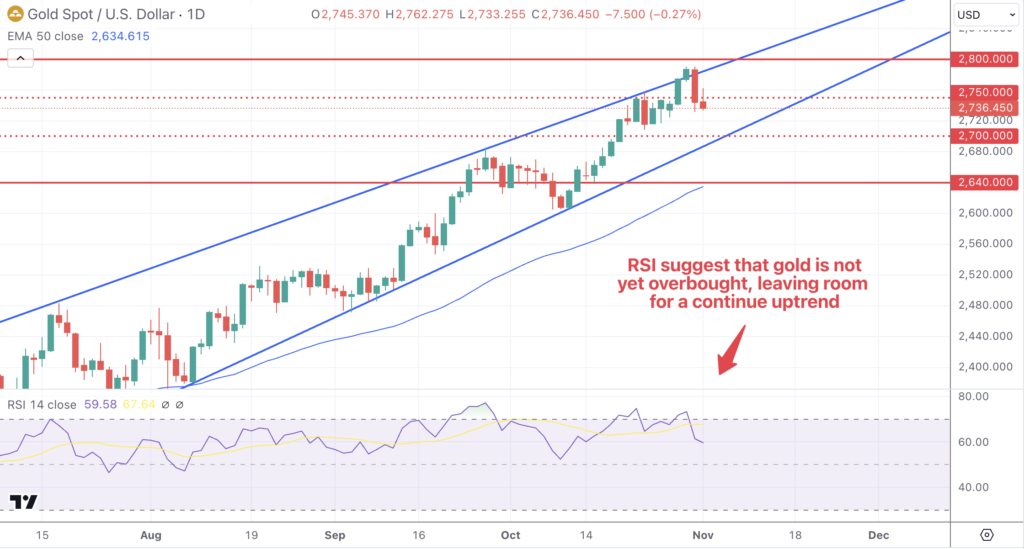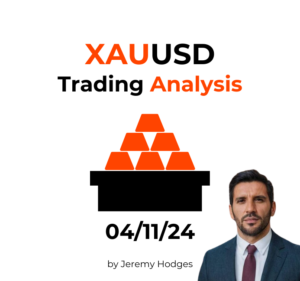Key Takeaways
- Gold maintains support at $2,700, with key resistance at $2,800, and potential upside toward $3,000 if bullish conditions strengthen.
- The 50-day EMA around $2,640 acts as a secondary support, while $2,600 could provide additional buying interest if reached.
- Key drivers include the U.S. election outcome, Fed policy direction, and ongoing geopolitical uncertainties.
- Market sentiment is currently balanced between safe-haven demand for gold and the limiting effects of a strong dollar and rising Treasury yields.
Market Dynamics and Recent Performance
Gold (XAU/USD) has shown resilience, with prices firming up around the $2,700 mark amid global economic and political uncertainties. The upcoming U.S. presidential election and Federal Reserve interest rate decision are major events influencing investor sentiment, leading to continued safe-haven demand for gold. In addition, the steady rise in Treasury yields and a relatively strong U.S. dollar have provided some resistance to further gains, resulting in a push-pull effect on gold’s trajectory.
Technical and Fundamental Influences
From a technical perspective, gold has been trading within a well-defined range, with $2,700 acting as an important support level. This price zone has seen strong buyer interest, as any dips toward $2,700 have been met with renewed demand. Should gold break below this level, the next significant support sits around the 50-day EMA near $2,640. If this area fails to hold, a further decline could bring prices toward $2,600, though such a move would likely attract even more buying interest given the market’s underlying bullish tone.

The resistance level at $2,800 remains a key upside target, with the psychological $3,000 mark seen as an ambitious, yet possible, long-term objective if bullish momentum persists. The technical indicators, including the Relative Strength Index (RSI), suggest that gold is not yet overbought, allowing room for additional gains if catalysts emerge. Fundamentally, the demand for gold is supported by global risk factors and monetary policy uncertainty. The Federal Reserve’s upcoming rate decision, in particular, could provide a boost if dovish signals suggest an extended period of low interest rates, which typically supports gold.
Looking Forward
In the coming week, the U.S. election outcome and the Fed’s policy stance will be critical for gold’s direction. A dovish Fed, signaling potential rate cuts or continued low rates, would likely reinforce gold’s appeal as a hedge against economic instability. Conversely, a stronger U.S. dollar or any unexpected hawkish signals could cap gains, with $2,700 expected to be a strong base level. The market’s response to geopolitical events and any shifts in investor sentiment towards safe-haven assets will also be pivotal in guiding gold’s short-term movement.

